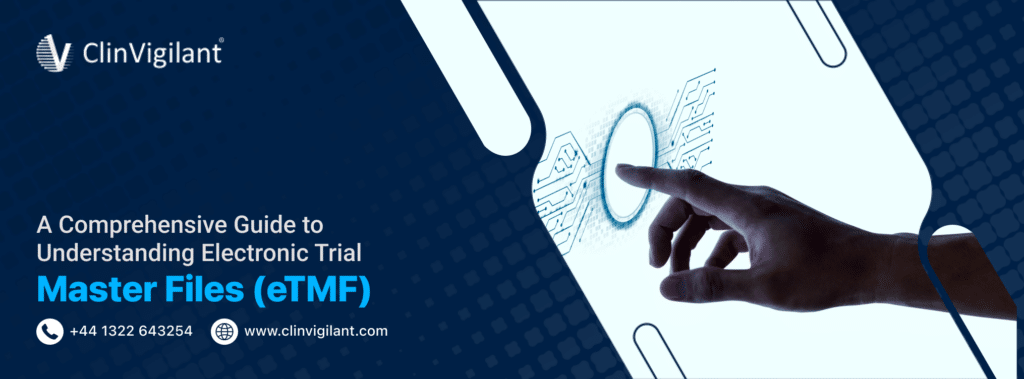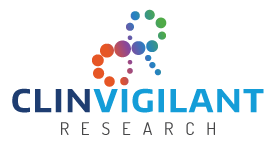
The management of clinical trial documentation is a crucial aspect of running efficient and compliant clinical trials. With rising costs and complexity of trials, having an electronic trial master file (eTMF) system has become pivotal. In this blog, we will understand what an eTMF is, its components, benefits, challenges, and why choosing the right eTMF system is critical for success.
Purpose and Role of eTMF
An eTMF refers to a software system that enables sponsors, CROs, and sites to store, access, manage, and archive all trial-related content electronically in a centralized, secure repository. It serves as the single source of truth for all trial documentation across the lifecycle of a study.
The key purposes and roles of an eTMF system include:
- Centralized document repository – Stores study documents in a structured format in a single, unified system
- Access control – Manages user access and permissions to ensure privacy and optimized workflows
- Version control – Maintains iteration history and ensures use of only the latest approved documents
- Compliance & inspection readiness – Supports audit trail, reporting, and faster resolution of queries to ensure inspection readiness
- Collaboration – Enables seamless collaboration between all parties involved in a study through centralized content and workflows
Components of an eTMF
An clinical trial software comprises structured modules and components that mirror the document categories mandated by ICH and other health authorities:
- Study admin module: Protocol, EC/IRB approvals, product info, licenses, contracts, insurance, CVs, training records
- Site management module: SOPs, pre-study visits, regulatory docs, IP accountability logs, delegation logs
- Subject module: ICF, eligibility, SAEs, dosage changes, commitments
- Safety module: AE/SAE reporting & follow ups, safety reports
- CRF module: Blank & completed case report forms, queries
- Lab module: Lab normal ranges, individual results
- Trial master file in clinical research index
Having structured TMF components ensures standardization, simplifies oversight, enables targeted search, and makes inspections more straightforward.
The Evolution of eTMF in Clinical Trials
The concept of maintaining trial master files originated in paper binders organized into sections mirroring TMF components. With the exponential increase in trial complexity and document volume over the past two decades, the industry shifted towards primitive eTMF systems to store files electronically in basic folder structures.
However, rapid globalization of trials and rising data volumes necessitated more robust, enterprise-level eTMF clinical trials systems with advanced functionality around access control, collaboration, versioning. Leading eTMF systems today provide end-to-end support across the study lifecycle, integrate with EDC and CTMS solutions, and enable automation around TMF documents and workflows using technologies like AI.
Benefits of eTMF in Clinical Trials
The right eTMF framework can deliver immense advantages over traditional paper-based TMFs:
- Real-time visibility into TMF status – Enables gap analysis, KPI monitoring, metrics to streamline oversight
- Accelerated document workflows – Faster review and approval cycles with automated routing through validation rules
- Reduced time for trial closure – No delays waiting for paper documents; bulk archival instead
- Cost efficiency – Through eliminating paper printouts, couriers, lost documents, and duplicated efforts
- Enhanced collaboration – Provides single document versions and clarity on outstanding work to all parties
- Risk mitigation during audits – Through access to accurate, up-to-date content and audit-ready reporting
Challenges and Solutions in Managing eTMFs
However, implementing and managing eTMF systems also pose some key challenges:
Challenges Solutions
- Overlooking validation of critical functionalities in selection process – Follow standardized RFP templates to evaluate core eTMF features like access security, version control, collaboration capabilities
- Sub-optimal user adoption – Drive adoption throughworkflows integrated into daily tasks, admin privileges to ensure compliance
- Maintaining document standards across sites & systems – Library of mandatory templates with custom fields to standardize documents
- Sprawling proliferation of content across multiple systems – Integrate eTMF tightly with other enterprise systems like EDC, CTMS for unified structure
- Inability to stay inspection-ready at all times – Automated SOPs to manage milestones, KPI metrics focused on metrics like query age, missing pages
Why Choose ClinVigilant’s eTMF System
While the right eTMF system is invaluable, the specific choice of platform is critical as substandard tools can hamper compliance, productivity, and overall trial success itself.
ClinVigilant offers a unified Clinical Data Management System with a deeply integrated eTMF module that surfaces optimized functionality like:
- Unified platform covering EDC, coding, ePRO, eConsent, and eTMF for simplified validation, administration, analysis, archival
- Standards-based library of 1000+ global tmf clinical trial templates covering hundreds of document types such as CRFs, ICFs, SAE forms
- Drag-and-drop designer to build interactive smart forms with business logic, rules, signatures, dynamic content
- Automated workflows configurable through visual designer to modeling document flow as per SOPs
- Role-based access down to field level across all modules and permissioned actions
- Near real-time program metrics across modules give live visibility into performance KPIs
- Future-proof scalable architecture using containerization ready for integration across trial ecosystems
- Available as SaaS or for easy on-prem installation with Docker containers
By unifying all CDM capabilities into a single platform, ClinVigilant’s Clinical Suite enables simplified oversight, consistency, automation, and compliance across the end-to-end clinical trial.
Conclusion
Effective management of trial master file content is fundamental to clinical trial success, now more than ever. While traditional paper binders have given way to basic eTMF document repositories, leading systems like ClinVigilant take the next step through deep EDC integration, automation, and role-based security models. As complexity and global distribution of trials increase exponentially, having the right eTMF platform provides the structure, safeguards, ease of use and metrics visibility to stay inspection-ready while enabling teams to focus on science and site relationships.
Faqs
What are the challenges faced in managing an eTMF and how can they be addressed?
Managing an eTMF can present challenges such as incomplete documentation, which can result in delays in study timelines and regulatory non-compliance, and limited accessibility. To address these challenges, standardization is essential to ensure that all study-related documents are complete and accurate. Utilizing advanced technology can improve accessibility, security, and efficiency. Quality control measures can help maintain data integrity, and adequate training can equip staff members with the necessary skills and knowledge.
What should be considered when implementing an eTMF system?
Before implementing an eTMF system, it’s important to understand what to expect throughout the process. Questions about the duration of implementation, the training program, and the effort required from internal team members should be asked during vendor selection. All content that needs migrating should be ready for transfer to speed up the migration process. A dedicated project manager should be designated to lead the way and act as the primary point of contact between the organization and the eTMF vendor.

